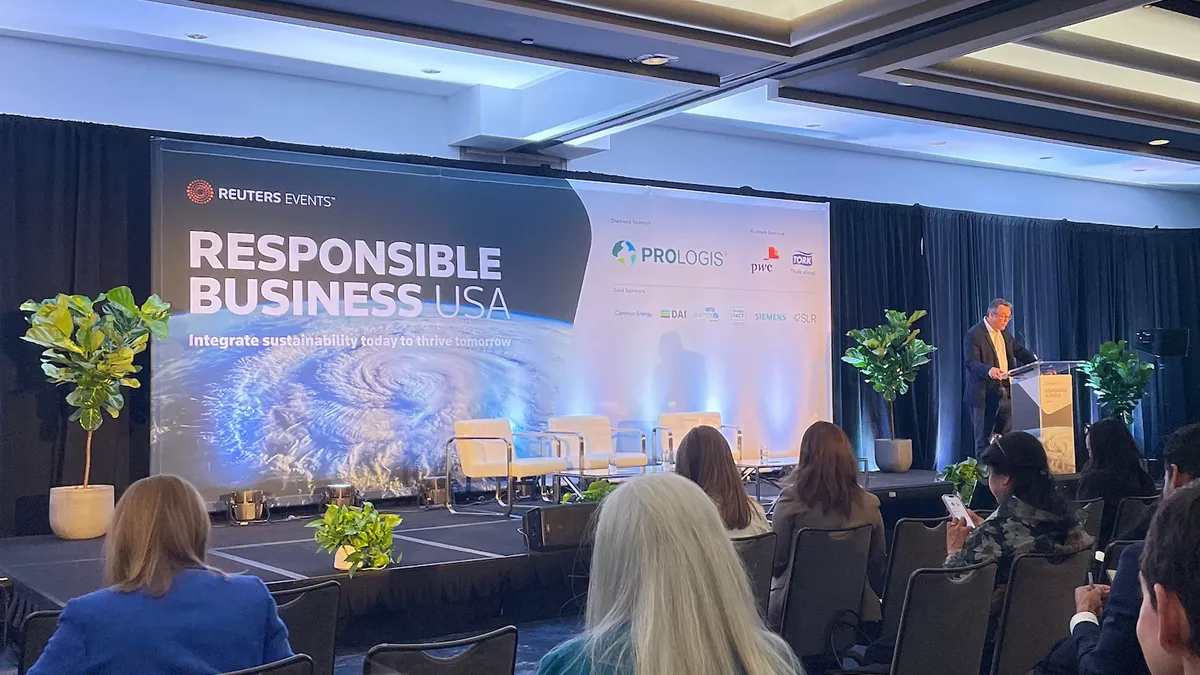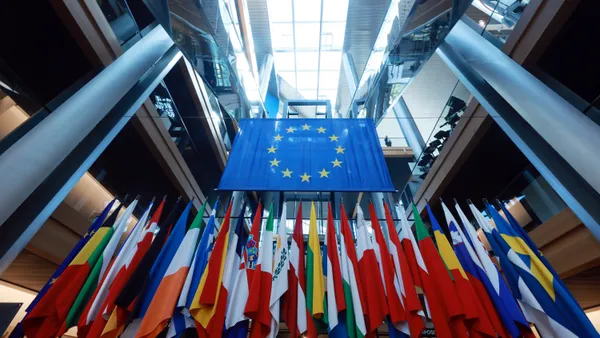NEW YORK — Climate regulation, and how to navigate it, was top of mind for many of the business leaders, executives and sustainability experts present at Reuters’ Responsible Business USA event Tuesday. The Securities and Exchange Commission’s recently passed climate disclosure rule, in particular, was at the forefront of several discussions regarding compliance, implementation of decarbonization strategies and how the SEC’s rule compares to other climate-related legislation.
The rule, which the agency adopted after a split 3-2 vote earlier this month, is currently on pause pending a review from the U.S. Eighth Circuit Court of Appeals, which is evaluating a bevy of lawsuits facing the SEC. A total of nine legal challenges have been submitted across six U.S. Circuit Courts of Appeals since the agency approved its rule on March 6, against a backdrop of mounting political criticism and strong pushback from companies — a reaction many at the conference dissected.
“This is not a radical thing,” Mindy Lubber, CEO of sustainability nonprofit Ceres, said during a Tuesday panel discussion. “It is consistent with standards and it is consistent with the movement of the world,” she added, referring to California’s climate disclosure bills, the European Union’s Corporate Sustainable Reporting Directive, and climate-related legislation passed in China and Australia.
Lubber said the politicization of climate in the U.S. was “unfortunate,” and the backlash the SEC climate rule received was surprising given that it’s a “simple, modest concept” that relates to assessing material risk. She said such assessments are already being done around the world.
The final rule scaled back scope 1 and scope 2 reporting requirements and scrapped scope 3 emissions disclosures entirely. However, California’s SB 253 still requires companies to start reporting scope 3 emission by 2027 and the EU’s CSRD, which impacts U.S. companies with EU subsidiaries as well, has far more extensive scope 3 reporting requirements.
“For any multinational company, it doesn’t make any sense to have one set of filings in the U.S., something else in the EU and something else in the UK,” Lubber said, alluding to the compliance conundrum that could be created due to differing disclosure requirements.
The SEC probably made the decision to scale back as it was “sensitive to the lawsuits that were coming,” Jeff Hales, a member of the International Financial Reporting Standards Foundation and the International Sustainability Standards Board, told attendees in the auditorium. Hales noted that the West Virginia v. EPA ruling in 2022 — which limited the scope of the Environmental Protection Agency’s regulatory powers — also spurred broader implications for all federal climate rulemaking. Now, it is more incumbent upon agencies to justify how the rulemaking is “reasonably foreseen” within the original mandate given to them by Congress, he said.
“That lawsuit clearly has changed the way … all federal agencies sort of think about their role and what they can do and when they can do it,” Hales said. “So, you have to be very careful as a federal agency these days to make sure that you can justify the rulings that you're applying.”
But when asked how companies — both larger multinationals that will have to report their carbon footprint to several jurisdictions and smaller U.S.-based businesses that will have to assess their materiality for the SEC — should respond to the political “noise around the floor,” Hales advised them to ignore it.
Lubber said assessing climate risk was no different than assessing risk for currency, inflation, natural resource depletion and global unrest, which all have articulated, anonymized risk frameworks that have been used for decades, though different in nature.
She stressed that there is probably no “perfect regulation” or “perfect standard,” but if the standard is consistent, comparable and even “80% good,” it is sufficient.
“Let’s not make perfect the enemy of the good,” she said. “But let’s make sure [the standard] is comparable.”












